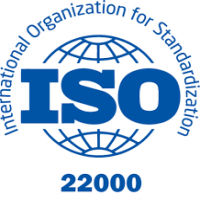Achieve Information Security Mastery with ISO 27001 certification

I. Introduction
A. Overview of ISO 27001 Certification
ISO 27001 Certification is an internationally recognized standard for Information Security Management Systems (ISMS). It provides a framework for establishing, implementing, maintaining, and continuously improving information security. By adhering to ISO 27001, organizations can ensure they manage sensitive information securely, protecting it from threats and vulnerabilities. The certification process involves assessing risks, implementing controls, and undergoing regular audits to verify compliance. Achieving ISO 27001 demonstrates a commitment to safeguarding information assets and meeting global security standards.
B. The Growing Importance of Information Security in the Digital Age
In today’s digital age, information security is more critical than ever due to the increasing frequency and sophistication of cyber threats. With organizations storing vast amounts of sensitive data online, protecting this information from breaches, theft, and unauthorized access is essential. Information security helps maintain trust with clients, comply with regulatory requirements, and avoid financial and reputational damage. As businesses adopt digital transformation strategies, robust security measures like those outlined in ISO 27001 are necessary to mitigate risks and ensure data integrity and confidentiality.
C. Benefits of ISO 27001 Certification for Businesses and Organizations
ISO 27001 Certification offers numerous benefits, including enhanced protection of information assets through a structured risk management approach. It boosts stakeholder confidence by demonstrating a commitment to high security standards and regulatory compliance. Organizations with ISO 27001 Certification often experience improved operational resilience, reducing the impact of security incidents. Additionally, it can provide a competitive advantage by differentiating the business in the marketplace and fostering a culture of security awareness and continuous improvement among employees.
II. What is ISO 27001 Certification?
A. Definition and Purpose of ISO 27001
ISO 27001 is an international standard for establishing, implementing, maintaining, and improving an Information Security Management System (ISMS). Its purpose is to help organizations protect their sensitive information through a systematic approach to managing security risks. By defining a clear framework for information security, ISO 27001 helps organizations identify and mitigate potential threats, ensure compliance with legal and regulatory requirements, and enhance overall information security management. Achieving ISO 27001 certification demonstrates an organization’s commitment to safeguarding critical data and maintaining high security standards.
B. History and Development of the ISO 27001 Standard
ISO 27001 was first published in 2005 as part of the ISO/IEC 27000 family of standards, which focus on information security management. The standard evolved from earlier frameworks like BS 7799, a British standard developed in the 1990s. ISO 27001 was revised in 2013 to align with other ISO management system standards, improving its integration and usability. The latest version, published in 2022, continues to reflect current best practices and emerging threats, ensuring that the standard remains relevant and effective in addressing modern information security challenges.
C. Key Principles and Components of ISO 27001
ISO 27001 is based on several key principles and components, including the Plan-Do-Check-Act (PDCA) cycle for continuous improvement. Core principles include risk management, where organizations must identify, assess, and treat information security risks. The standard mandates the establishment of an Information Security Management System (ISMS) with defined policies, objectives, and controls. Key components also include conducting regular risk assessments, implementing security controls, and performing internal audits. Management reviews are essential to ensure ongoing effectiveness and improvement of the ISMS, aligning with ISO 27001’s goal of enhancing overall information security.
III. Benefits of ISO 27001 Certification
A. Enhanced Information Security and Risk Management
ISO 27001 Certification significantly enhances information security by providing a comprehensive framework for identifying and managing risks. It helps organizations systematically assess potential threats to their data and implement robust controls to mitigate these risks. This structured approach ensures that sensitive information is protected against breaches, unauthorized access, and other security incidents. By adhering to ISO 27001 standards, organizations can continuously monitor and improve their security measures, leading to stronger protection of valuable data and a more resilient information security posture.
B. Increased Trust and Confidence from Stakeholders
ISO 27001 Certification builds trust and confidence among stakeholders by demonstrating an organization’s commitment to high standards of information security. Customers, partners, and investors are more likely to trust organizations with certified ISMS, knowing that their sensitive information is managed with rigorous security controls. Certification provides assurance that the organization has implemented best practices for protecting data and addressing potential vulnerabilities. This increased confidence can enhance business relationships, improve customer satisfaction, and strengthen the organization’s reputation in the marketplace.
C. Compliance with Legal and Regulatory Requirements
Achieving ISO 27001 Certification helps organizations comply with various legal and regulatory requirements related to information security. The standard aligns with data protection regulations and industry-specific requirements, such as GDPR, HIPAA, and PCI-DSS. By adhering to ISO 27001, organizations can ensure they meet mandatory security standards and avoid legal penalties or fines. Compliance with these regulations not only reduces legal risks but also demonstrates a proactive approach to managing information security and protecting personal and sensitive data.
IV. The ISO 27001 Certification Process
A. Steps to Achieve ISO 27001 Certification
Initial Assessment and Gap Analysis: The certification process begins with an initial assessment to evaluate the organization's current information security practices. A gap analysis identifies discrepancies between existing practices and ISO 27001 requirements, providing a roadmap for necessary improvements. This assessment helps prioritize actions and resources needed to align with the standard’s criteria, setting a solid foundation for developing an effective Information Security Management System (ISMS).
Developing and Implementing an Information Security Management System (ISMS): Once gaps are identified, the organization develops and implements an ISMS tailored to ISO 27001 standards. This involves defining security policies, setting objectives, and establishing procedures to manage risks. The ISMS framework should include risk assessment processes, control measures, and a clear structure for monitoring and improving security practices. Effective implementation ensures that the ISMS integrates seamlessly into the organization’s operations.
Documentation and Training: Comprehensive documentation is crucial for ISO 27001 compliance, including policies, procedures, and records that demonstrate adherence to the standard. Training programs are essential to ensure that employees understand their roles within the ISMS and are aware of security practices and protocols. Proper documentation and training help maintain consistency, support compliance, and foster a culture of security awareness throughout the organization.
V. Integrating ISO 27001 into Your Organization
A. Strategies for Effective Implementation of ISMS
Effective implementation of the ISMS begins with strong leadership and clear objectives. Develop a detailed implementation plan that includes assigning roles, allocating resources, and establishing timelines. Integrate information security practices into daily operations and ensure alignment with organizational goals. Engage key stakeholders in the planning process and communicate the benefits of the ISMS to secure their buy-in. Regularly review and update policies and procedures to address evolving risks and regulatory changes. A structured approach and consistent execution will facilitate a smooth integration of ISO 27001 into the organization.
B. Engaging Employees and Fostering a Culture of Security Awareness
Engaging employees is crucial for the success of an ISMS. Foster a culture of security awareness by providing regular training and resources on information security practices. Involve employees in security initiatives and encourage them to contribute ideas for improving security measures. Communicate the importance of information security and how each role contributes to protecting data. Recognize and reward compliance and proactive behavior. By embedding security into the organizational culture and ensuring that all employees understand their responsibilities, you can strengthen overall security and support the ISMS effectively.
VI. Conclusion
A. Recap of the Importance and Benefits of ISO 27001 Certification
ISO 27001 Certification is vital for organizations seeking to enhance their information security management. It provides a structured framework for protecting sensitive data, managing risks, and ensuring compliance with legal and regulatory requirements. The certification enhances stakeholder trust, demonstrates commitment to high security standards, and improves organizational resilience. By adhering to ISO 27001, organizations can systematically address security challenges, safeguard valuable information, and maintain a competitive edge in today’s data-driven world.
B. Encouragement for Organizations to Pursue ISO 27001 for Enhanced Information Security
Organizations are encouraged to pursue ISO 27001 Certification as a proactive step toward achieving robust information security. The certification not only protects sensitive data from breaches and threats but also enhances overall operational efficiency and credibility. Implementing ISO 27001 demonstrates a commitment to best practices in information security management and positions organizations as leaders in safeguarding data. By investing in ISO 27001, businesses can strengthen their security posture, meet compliance requirements, and build confidence among customers and partners.
C. Final Thoughts on the Future of Information Security Management Standards
The future of information security management standards will continue to evolve in response to emerging threats and technological advancements. As cyber threats become more sophisticated, standards like ISO 27001 will increasingly focus on integrating advanced security technologies and adapting to new regulatory landscapes. Organizations must stay vigilant and adaptable, embracing continuous improvement and innovation to maintain effective information security.
Note: IndiBlogHub features both user-submitted and editorial content. We do not verify third-party contributions. Read our Disclaimer and Privacy Policyfor details.



